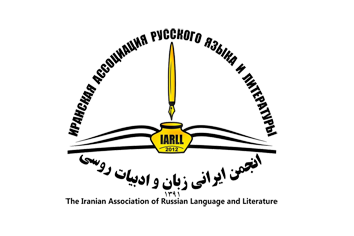Анализ акустических параметров русских щелевых согласных в сравнении с произношением иранских учащихся
DOI:
https://doi.org/10.52547/iarll.18.11Ключевые слова:
акустические характеристики, щелевые согласные, , формант, артикуляция.Аннотация
Владение иностранным языком кроме грамматических и лексических проблем также связано с фонологическими проблемами, во всех их аспектах как акустические и артикуляционные характеристики. Такие проблемы должны решаться, чтобы реализовать понятную коммуникативность как основную цель обучения русскому языку при максимальном приближении оригинала к языку.
Эксперимент был направлен на повышение акустических и произносительных навыков иранских студентов при помощи программы “Praat”. Целью анализа является выявление влияния фонологических и артикуляционных свойств консонантной системы персидского языка на русскую устную речь иранских студентов и устранение этого мешающего влияния на изучаемый язык, а также коррекция и улучшение произношения студентов.
Основными методами исследования являются сопоставительно-типологический метод, экспериментальные методы и методы измерения сходства и различия, сравнения и статистической обработки данных. В ходе эксперимента были выявлены различия в артикуляции носителя русского языка и иранских учащихся.
Библиографические ссылки
- Бертельс, Е. Э. (1932). Учебник персидского языка. Ленинград: Издание Ленинградского Восточного Института.
- Валипур, А., & Джамалзад М. (2020). Экспериментальное исследование особенностей произношения русских щелевых согласных при обучении иранских студентов. Вестник Пермского национального исследовательского политехнического университета. Проблемы языкознания и педагогики, (2). 188-201.
- Зиндер, Л. Р. (1979). Общая фонетика: учебное пособие. М.: Высшая школа.
- Князев, С. В., Пожарицкая С. К. (2011). Современный русский литературный язык. Москва: Гаудеамус. 432 с.
- Логинова, И. М. (2017). Очерки по методике обучения русскому
произношению: учебное пособие. Москва: РУДН.
- Любимова, Н. А. (2019). Лингвистические основы обучения артикуляции русских звуков. 2-е изд., стереотип. М.: русский язык.
- Матусевич, М. И. (1976). Современный русский язык. Фонетика. М.: Просвещение.
- Ткач, Т. Г. (2010). Лингводидактические основы обучения русской фонетике будущих филологов-русистов в высшей школе Ирана. российский университет дружбы народов. Москва.
- Черепко, В. В., & Ахнина, К. В. (2020). Особенности произношения русских переднеязычных щелевых и аффрикат японскими студентами. Теория языка и межкультурная коммуникация, (2), 307-318.
- Якобсон, Р., & Фант, Г. М., & Халле, М. (1962). Введение в анализ речи. Новое в лингвистике, 2, 204.
- Bijankhan, M. (2013). Phonetic system of the Persian language. Tehran: SAMT. [In Persian]
- Haghshenas, Ali Mohammad. (2014). Phonology. Persian edition (Faros Iran). Tehran: Agah. [In Persian]
- Hayward, K. (2000). Experimental phonetics. Harlow: Pearson Education Limited. [In English].
- Johnson, K. (2015). Acoustic and auditory phonetics. Translated by Zahra Mahmoudzadeh. Iranian Research Institute for Information Science and Technology. Tehran. Chapar. [In Persian]
- Modarresi Ghavami, Golnaz (2019). Phonetics: The Scientific Study of Speech. Tehran: SAMT. [In Persian]
- Mousavi, Neda (2015). PRAAT Doing Phonetics by Computer. Tehran: Neviseh Parsi. [In Persian]
- Richards, J. C., & Tung, P., & Ng, P. (1992). The culture of the English Language teacher: A Hong Kong example. RELC journal, 23(1), 81-102. [In English].
- Samareh, Yadollah & Nilipour, Reza. (2018). Persian phonology. Sounds and making phonetic syllables, Tehran: Markaze nashr-e daneshgahi. [In Persian]
- Valipour, Alireza. (2014). Russian phonetic. Tehran: SAMT. [In Persian]
- Weenink, D. (2018). Speech signal processing with Praat. University of Amsterdam. [In English].
- Zahraei, Seyed Hassan (2018). Russian language instruction. Tehran: SAMT. [In Persian]
Bibliography
- Bertel's, E. Je. (1932). Uchebnik persidskogo jazyka. Leningrad: Izdanie Leningradskogo Vostochnogo Instituta.
- Valipur, A., & Dzhamalzad M. (2020). Jeksperimental'noe issledovanie osobennostej proiznoshenija russkih shhelevyh soglasnyh pri obuchenii iranskih studentov. Vestnik Permskogo nacional'nogo issledovatel'skogo politehnicheskogo universiteta. Problemy jazykoznanija i pedagogiki, (2). 188-201.
- Zinder, L. R. (1979). Obshhaja fonetika: uchebnoe posobie. M.: Vysshaja shkola.
- Knjazev, S. V., Pozharickaja S. K. (2011). Sovremennyj russkij literaturnyj jazyk. Moskva: Gaudeamus. 432 s.
- Loginova, I. M. (2017). Ocherki po metodike obuchenija russkomu proiznosheniju: uchebnoe posobie. Moskva: RUDN.
- Ljubimova, N. A. (2019). Lingvisticheskie osnovy obuchenija artikuljacii russkih zvukov. 2-e izd., stereotip. M.: russkij jazyk.
- Matusevich, M. I. (1976). Sovremennyj russkij jazyk. Fonetika. M.: Prosveshhenie.
- Tkach, T. G. (2010). Lingvodidakticheskie osnovy obuchenija russkoj fonetike udushhih filologov-rusistov v vysshej shkole Irana. rossijskij universitet druzhby narodov. Moskva.
- Cherepko, V.V., & Ahnina, K.V. (2020). Osobennosti proiznoshenija russkih perednejazychnyh shhelevyh i affrikat japonskimi studentami. Teorija jazyka i mezhkul'turnaja kommunikacija, (2), 307-318.
- Jakobson, R., & Fant, G.M., & Halle, M. (1962). Vvedenie v analiz rechi. Novoe v lingvistike, 2, 204.
- Bijankhan, M. (2013). Phonetic system of the Persian language. Tehran: SAMT. [In Persian]
- Haghshenas, Ali Mohammad. (2014). Phonology. Persian edition (Faros Iran). Tehran: Agah. [In Persian]
- Hayward, K. (2000). Experimental phonetics. Harlow: Pearson Education Limited. [In English].
- Johnson, K. (2015). Acoustic and auditory phonetics. Translated by Zahra Mahmoudzadeh. Iranian Research Institute for Information Science and Technology. Tehran. Chapar. [In Persian]
- Modarresi Ghavami, Golnaz (2019). Phonetics: The Scientific Study of Speech. Tehran: SAMT. [In Persian]
- Mousavi, Neda (2015). PRAAT Doing Phonetics by Computer. Tehran: Neviseh Parsi. [In Persian]
- Richards, J. C., & Tung, P., & Ng, P. (1992). The culture of the English Language teacher: A Hong Kong example. RELC journal, 23(1), 81-102. [In English].
- Samareh, Yadollah & Nilipour, Reza. (2018). Persian phonology. Sounds and making phonetic syllables, Tehran: Markaze nashr-e daneshgahi. [In Persian]
- Valipour, Alireza. (2014). Russian phonetic. Tehran: SAMT. [In Persian]
- Weenink, D. (2018). Speech signal processing with Praat. University of Amsterdam. [In English].
- Zahraei, Seyed Hassan (2018). Russian language instruction. Tehran: SAMT. [In Persian]
Загрузки
Опубликован
Как цитировать
Выпуск
Раздел
Лицензия
Copyright (c) 2021 Исследовательский Журнал Русского Языка и Литературы

Это произведение доступно по лицензии Creative Commons «Attribution» («Атрибуция») 4.0 Всемирная.
![]()
"Creative Commons Attribution 4.0 International (CC-BY 4.0)"


